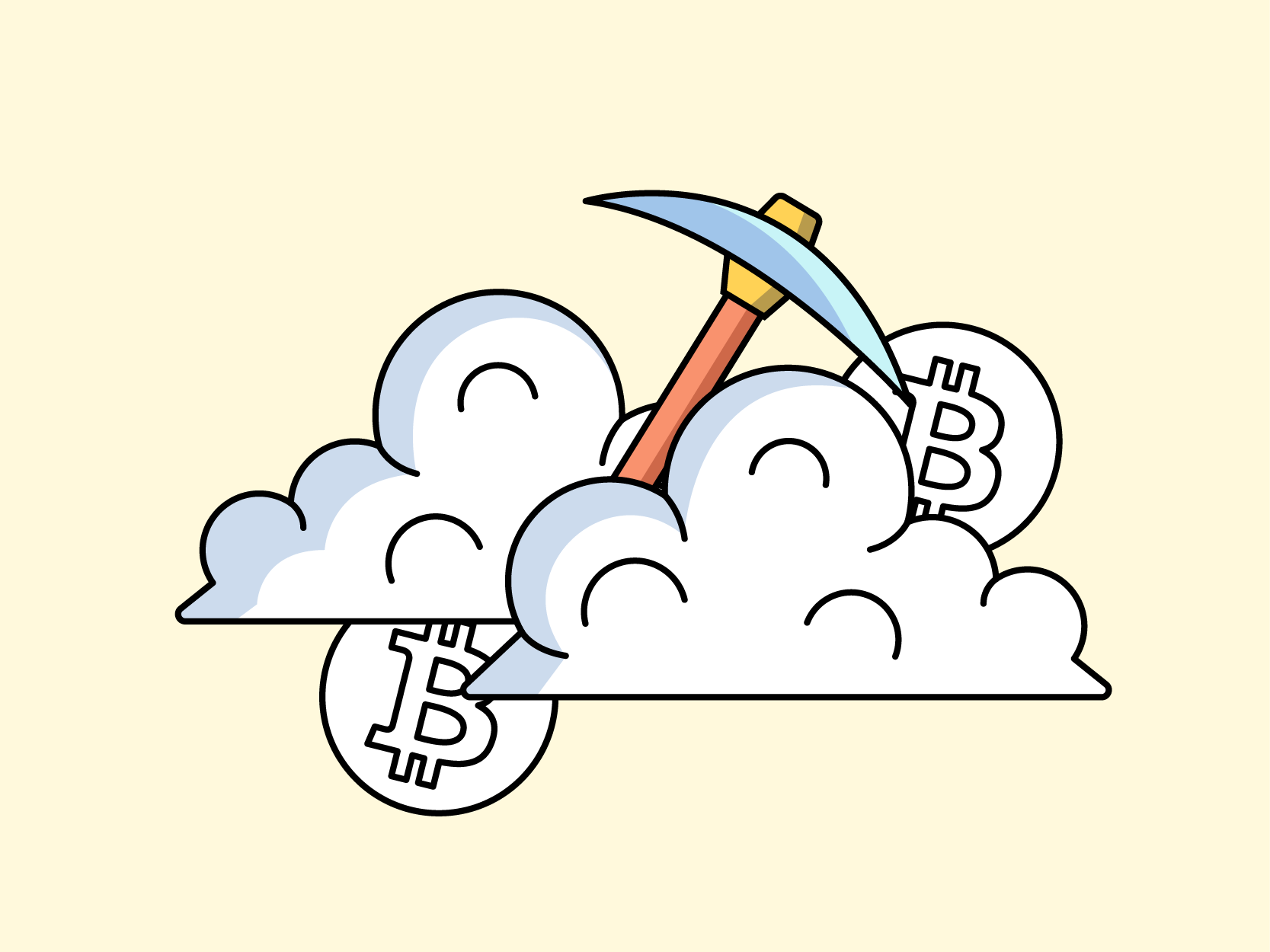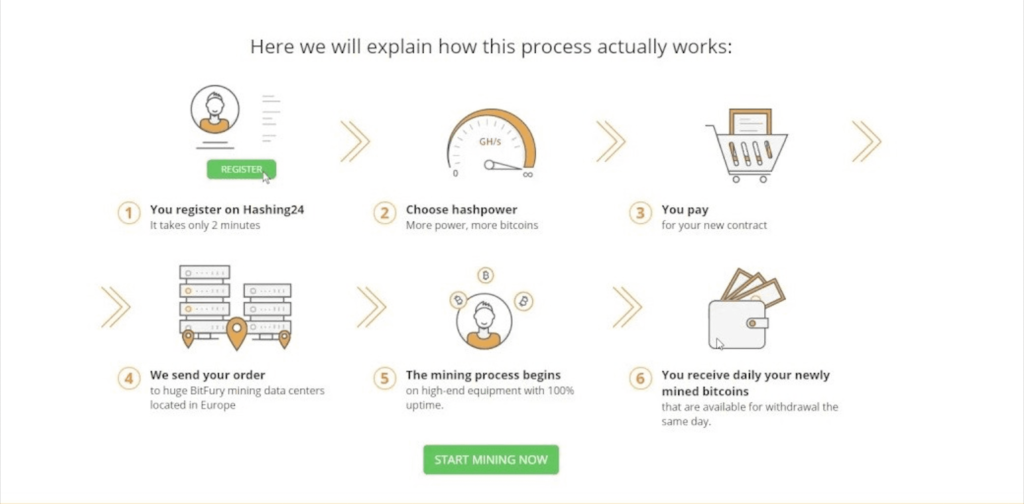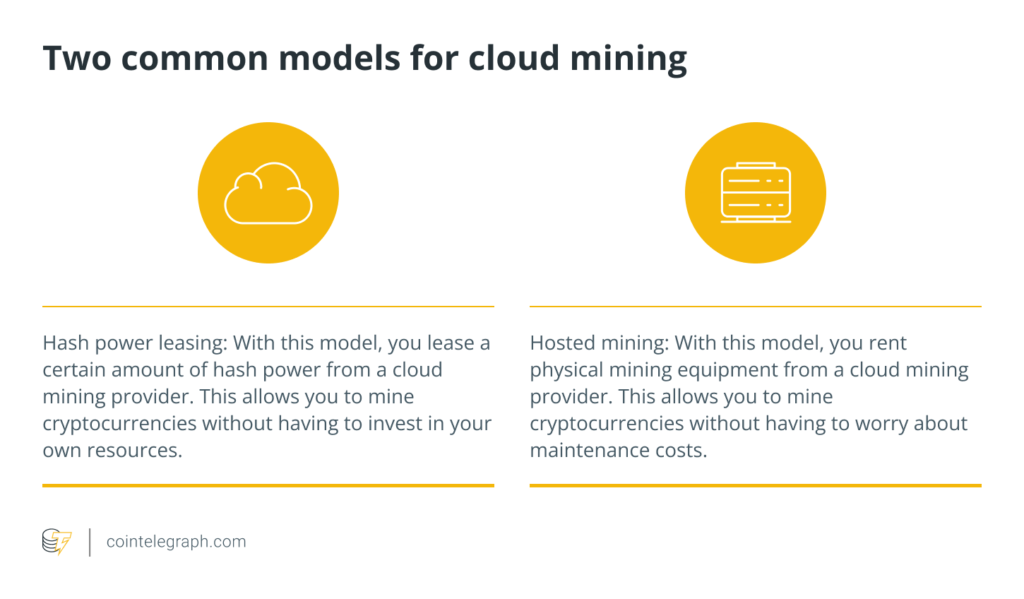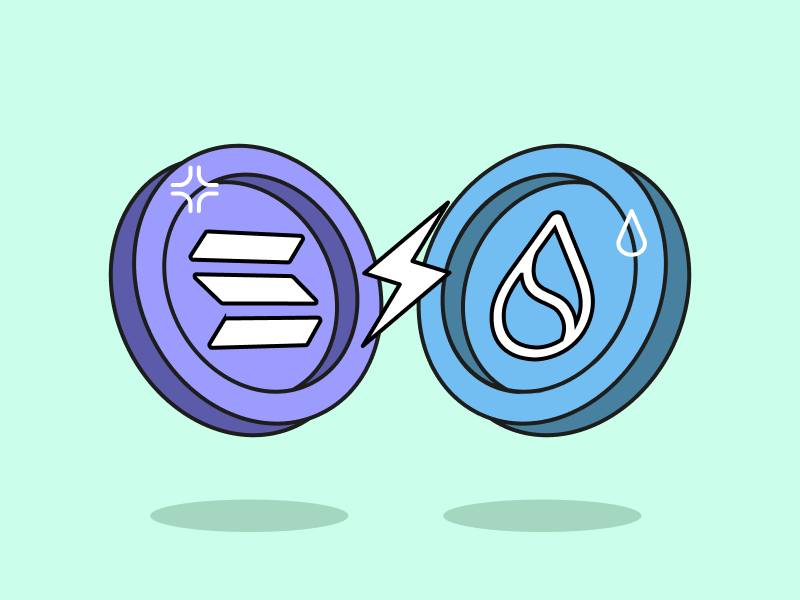What Is Cloud Mining?

In the world of cryptocurrency, there are numerous ways to generate profits. These include not only traditional asset trading and investment but also mining crypto assets to earn rewards. Mining in the crypto space can be categorized into several types, one of which is cloud mining a solution for miners to mine crypto assets without the need to own hardware. So, is cloud mining considered safe and profitable for miners? Let’s read the full article below to explore this topic further.
Article Summary
- ☁️ Cloud mining is a method of mining cryptocurrencies without owning hardware by renting computing resources from a cloud mining service provider.
- 2️⃣ The two types of cloud mining models are host mining, where miners have more control over the rig, and hash power leasing, where miners lease a portion of a mining farm’s hash power.
- ✍🏻 Some important metrics in cloud mining include hash rate (computing speed), cost per hash (contract cost divided by total hash power), pool fees (fees that reduce revenue), block reward (the amount of crypto assets received per block), and energy consumption.
- 💵 Advantages of cloud mining include cost effectiveness, no technical knowledge required, no maintenance issues, and earning passive income.
- 🔴 However, there are drawbacks to cloud mining, such as the risk of fraud, low profits, lack of control, less transparency, and regulatory risks.
What Is Cloud Mining?
Cloud mining is a method of mining cryptocurrencies, such as Bitcoin, without the need for hardware. Cloud mining serves as a solution for those who wish to mine cryptocurrencies by simply borrowing or renting computing resources from cloud mining service providers.
Various cloud mining service providers allow anyone to participate in the process of mining crypto assets remotely, but at a relatively low cost.
Essentially, cloud mining uses cloud computing to produce blockchain-based crypto assets. Cloud computing is a computational service that includes processing, software, and even digital document storage, all of which are accessible through cloud technology.
How Does Cloud Mining Work?

The emergence of cryptocurrencies has brought a novel approach to the concept of mining. Unlike traditional mining, which involves extracting solid materials like gold and other earth resources, cryptocurrency mining is entirely digital and does not involve any physical extraction. Instead, it relies on powerful computers to solve complex computational mathematical problems that validate and secure transactions on the blockchain.
In this process, when a cryptocurrency miner adds a new transaction block to the blockchain, the miner’s job is to verify that the transaction is accurate and not duplicated. This process is critical to ensuring the security of the distributed ledger, much like a blockchain. Ultimately, this process can create new crypto assets that miners can receive.
The following are the steps that miners can take to engage in cloud mining:
- Participate in cloud mining through a mining farm owned by a mining service provider by purchasing a portion of “hash power” from the service provider. Mining farms are typically located in remote locations but serve as data centers.
- After purchasing a certain amount of hash power, the cloud mining service provider offers miners access to profits or rewards based on the amount of hash power purchased.
- Cloud mining frees miners from all computer equipment maintenance costs and electricity bills. The entire mining process takes place in the cloud.
- Make sure you choose a trustworthy cloud mining service provider and select the type of contract and duration that suits your needs. For the initial process, miners need to make an upfront payment using crypto assets or fiat currency.
- There are several contract options to choose from, including contracts with 500 to 1000 giga hashes per second of hash power with a duration of one year. Cloud mining providers also offer crypto asset cloud mining contracts with terms of less than 1 year.
Types of Cloud Mining

There are two types of cloud mining models that can be tailored to miners’ preferences, including:
- Hosted Mining: This type of cloud mining requires miners to purchase or rent a mining rig and pay for installation and maintenance. With this type of cloud mining, miners have more control over the rig, allowing them to direct the hash power generated to a mining pool while reducing overhead costs.
- Hash Power Leasing: In this type of cloud mining, miners work to lease a certain portion of the hash power generated by a mining farm. Miners must sign up for a certain period of time, and the cloud mining company provides a share of the profits. Miners do not have to pay any maintenance or installation fees when renting hash power from a mining farm.
Metrics in Cloud Mining
To engage in cloud mining, miners need to understand several metrics that can help increase the profit potential of cloud mining, such as:
- Hash rate is the number of calculations a miner can perform in a second. A higher hash rate increases the probability of finding the next block in the blockchain and receiving rewards.
Hash rate can be measured in hashes per second (H/s), and is usually expressed in larger units such as:
- Kilohash (KH/s) is 1,000 (or 10^3) hashes per second.
- Megahash (MH/s) is 1,000,000 (or 10^6) hashes per second. This is 1,000 times a kilohash.
- Gigahash (GH/s) is 1,000,000,000 (or 10^9) hashes per second. This is 1,000 times a megahash or 1,000,000 times a kilohash.
- Terahash (TH/s) is 1,000,000,000,000 (or 10^12) hashes per second. This is 1,000 times a gigahash or 1,000,000,000 times a kilohash.
- Petahash (PH/s) is 1,000,000,000,000,000 (or 10^15) hashes per second. This is 1,000 times a terahash or 1,000,000,000,000 times a kilohash.
- Exahash (EH/s) is 1,000,000,000,000,000,000 (or 10^18) hashes per second. This is 1,000 times a petahash or 1,000,000,000,000,000,000 times a kilohash.
- Cost per hash is the cost of the cloud mining contract divided by the total hash power acquired. It’s useful for comparing different cloud mining contracts or companies.
- Pool fees are costs associated with cloud mining that will reduce your earnings.
- Block reward is the amount of crypto asset you receive for mining a new block, which helps you understand your potential earnings.
- Power consumption is measured in watts. In addition, the efficiency of the mining setup is measured in Joules per Terahash (J/TH), which indicates how much energy the hardware uses to perform a given amount of computation. As a measurement, a lower J/TH is better, meaning the hardware is operating more efficiently.
Advantages and Disadvantages of Cloud Mining
| Advantages | Disadvantages |
|---|---|
| Cost-effectiveness | Scams and fraud |
| No technical knowledge required | Low profit |
| No heat or noise | Lack of control |
| Free from maintenance troubles | Lower transparancy |
| Get a passive income | Regulatory risks |
After understanding the advantages and disadvantages of cloud mining, miners still need to conduct extensive research and assess the potential level of risk that can occur.
How to Start Cloud Mining
- Choose a cloud mining service provider. Some recommended trusted providers include:
- Youhodler.com
- Binance cloud mining
- Hashfrog.com
- Go.stormgain.app
- Ecos.am
- Nicehash.com
- Hashing24.com
- Register to create an account.
- Purchase a hash rate (mining contracts).
- You can now start cloud mining.
Is Cloud Mining Safe?
Cloud mining comes with certain risks, the most significant of which is the lack of full control over the mining equipment used. Additionally, contract profits can be subject to fluctuations, making it difficult to predict when you will break even or achieve profitability. Despite these concerns, cloud mining offers various potential benefits. It’s crucial to emphasize that selecting a trustworthy and reputable cloud mining service provider enhances security for miners. The cryptocurrency space currently has several cloud mining service providers that operate scams or act irresponsibly. Thus, exercising caution and conducting in-depth research are necessary before embarking on cloud mining.
Conclusion
Cloud mining presents a method of cryptocurrency mining that leverages cloud computing services. By adopting cloud mining, miners can avoid the need to own physical mining hardware, thereby reducing high maintenance and energy costs. However, it’s essential to recognize that cloud mining involves certain risks, including profit fluctuations and potential scams. To mitigate these risks, conducting thorough research and selecting a reputable cloud mining service provider are of utmost importance. Despite the inherent risks, cloud mining can still be an efficient and effective way to engage in cryptocurrency mining if approached with due diligence and prudence.
References
- Iulia Vasile, What Is Cloud Mining? Get Started With This Beginners Guide, Beincrypto, accessed on 18 July 2023.
- Binance Academy, What Is Cloud Mining in Crypto?, accessed on 18 July 2023.
- Ali Raza, Best Cloud Mining Services in 2023, Beincrypto, accessed on 18 July 2023.
- Robert Stevens, What Is Cloud Mining?, Coindesk, accessed on 18 July 2023.
- Jake Frankenfield, What Is Cloud Mining of Cryptocurrency, and How Does It Work?, Investopedia, accessed on 18 July 2023.
- Georgia Weston, Know Everything About Cloud Mining, 101blockchains, accessed on 18 July 2023.
Share


